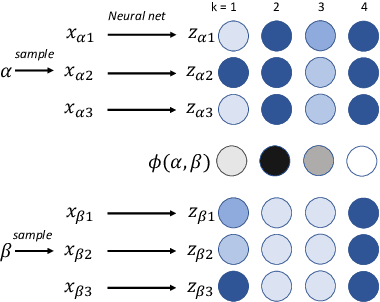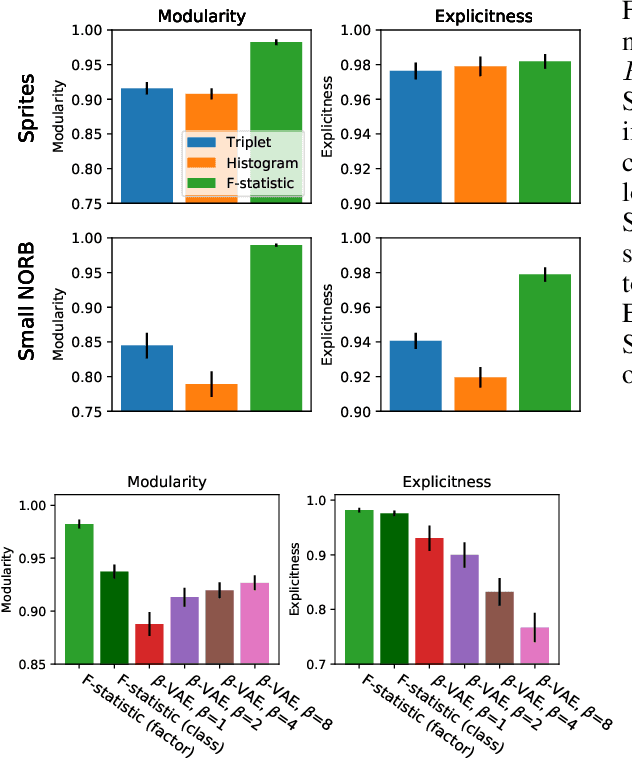Learning Deep Disentangled Embeddings with the F-Statistic Loss
Paper and Code
May 20, 2018


Deep-embedding methods aim to discover representations of a domain that make explicit the domain's class structure and thereby support few-shot learning. Disentangling methods aim to make explicit compositional or factorial structure. We combine these two active but independent lines of research and propose a new paradigm suitable for both goals. We propose and evaluate a novel loss function based on the $F$ statistic, which describes the separation of two or more distributions. By ensuring that distinct classes are well separated on a subset of embedding dimensions, we obtain embeddings that are useful for few-shot learning. By not requiring separation on all dimensions, we encourage the discovery of disentangled representations. Our embedding method matches or beats state-of-the-art, as evaluated by performance on recall@$k$ and few-shot learning tasks. Our method also obtains performance superior to a variety of alternatives on disentangling, as evaluated by two key properties of a disentangled representation: modularity and explicitness. The goal of our work is to obtain more interpretable, manipulable, and generalizable deep representations of concepts and categories.
 Add to Chrome
Add to Chrome Add to Firefox
Add to Firefox Add to Edge
Add to Edge